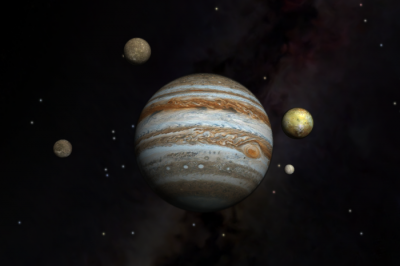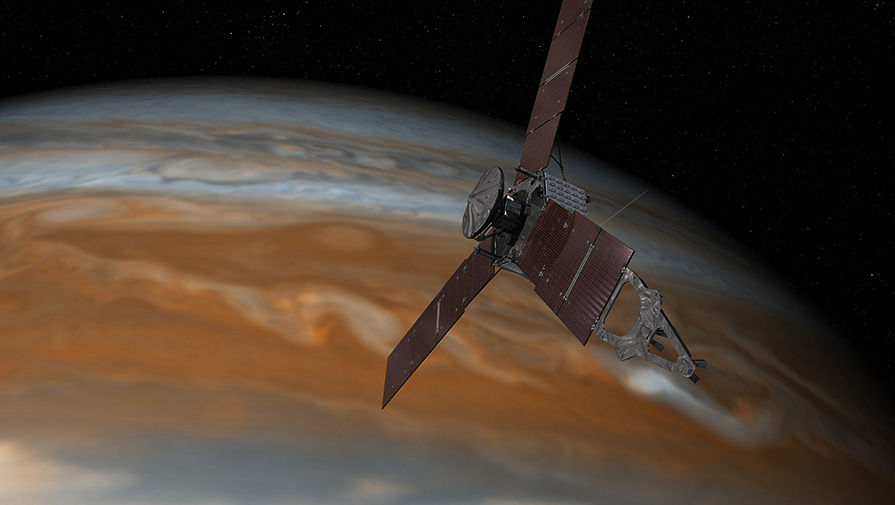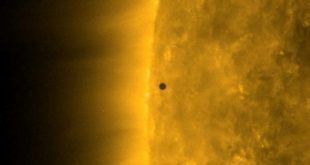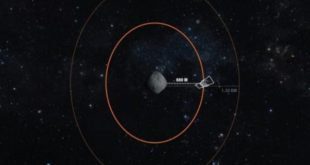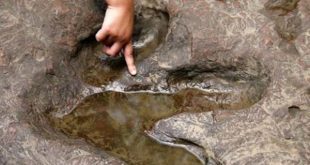 The study of the exoplanet, dubbed K2-33b, will undoubtedly help to better understand the processes of early planet evolution.
The study of the exoplanet, dubbed K2-33b, will undoubtedly help to better understand the processes of early planet evolution.
Scientists discovered in the constellation Taurus “hot Jupiters,” whose age does not exceed two million years, moments in astronomical terms, and whose existence proves the possibility of the birth of the planets are actually at the birth of stars, says an article published in the journal Nature.
“There are two mutually exclusive models of planetary formation and how they migrate across the solar system. Some of our colleagues believed that hot Jupiters migrate towards the star at the first stages of its development, while others believe that such transfers occur much later. Our discovery tells in favor of the first theory,” said Clement, Baruto (Clement Baruteau) from the University of Toulouse (France).
Baruto, and his colleagues made this discovery by observing young stars in the so-called Taurus molecular cloud – a giant “stellar nurseries” in length, several tens of light-years, located only 450 light years from Earth using a telescope CFHT in Hawaii.
The bull’s head
This gas cloud contains several tens of young stars, part of which has a newborn planets-satellites. Astronomers are watching them, hoping to solve the mystery of the birth of the Solar system and how appeared the Earth, the giant planets and comets.
Watching one of these stars, V830 Taurus, scientists noticed that the spectrum periodically and “moved” to the sides about every five days, which meant, with her planet making one revolution around the sun for approximately 4.9 days.
This planet, as shown by the calculations of a group of Baruto, belonged to the category of “hot Jupiters” – by the mass, it is slightly inferior to Jupiter (77%), but is 100 times closer to the sun than its “namesake” of the Solar system. The distance between her and the star is only 8 million kilometers, which is 6 times less than the distance between mercury and the Sun.
Judging by the lack of pronounced infrared radiation in the spectrum V830 Taurus, gas-dust disk around this star long since disappeared. This means that her “hot Jupiter” V830 Calf b or formed on the approaches to the luminary that is contrary to all theories of planet formation, or that it arose almost simultaneously with the star and moved closer to her in the first two years of his life.
And the Scorpion tail
Similar to the conclusions of their British colleagues, just published an article in Nature that have managed to find another extremely young planet – K2-33b in the constellation of Scorpio, using the power of the “resurrected” telescope “Kepler”.
This planet, which is a “hot Neptune”, lived a little more V830 Calf b – her age, according to scientists, is from 5 to 10 million years. In size it is inferior to the “hot Jupiter” from the Bullock – K2-33b is about 50% heavier than Neptune, and 3.5 times lighter than Jupiter. One revolution around the star it makes for almost the same time is 5.4 days.
This planet, judging by the relatively weak infrared radiation of light, now surrounded by the remnants of gas and dust disk, which gradually dissipate through space by ultraviolet and other forms of light of the young star. Young age of this planet and the presence of the remains of the protoplanetary disk, as in the case V830 Bullock b, suggests that giant planets can form in the first stages of the existence of stars and migrate towards the stars almost immediately after birth.
Direct examination and the other planets will be possible only after the launch and in orbit, telescopes of the new generation of orbital observatories TESS and James Webb, and ground-based telescopes TMT and E-ELT. They collected data as scientists hope, will help us uncover the secrets of the birth of the Earth, Jupiter and other Solar system bodies.

